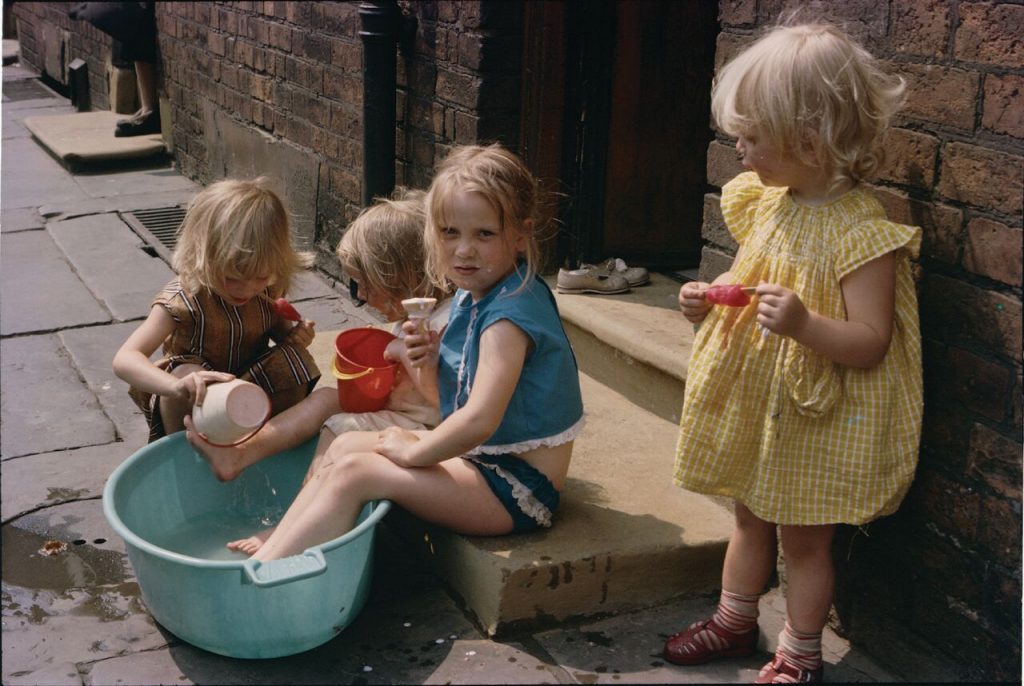
Hulme, July 1965 by Shirley Baker (© Shirley Baker Estate). Courtesy of the Shirley Baker Estate.
In 1960s Manchester, the kids’ domain is the street. They fashion swings from lampposts, dangle their arms into the mysterious depths of drains, and bounce, slide and rummage in a rubbish heap. In spite of the obvious grim undertones, there is nonetheless an uplifting sense of liberation as the street, at the hands of grubby-faced and raucous children, is co-opted for the serious business of play.
These are the scenes captured by pioneering British photographer Shirley Baker (1932-2014), which being exhibited in Women and Children; and Loitering Men at Manchester Art Gallery until August 2017. Taken during the period from 1960 to 1980, Baker’s street photography documents the lives of communities living in inner city Manchester and Salford during the years of urban clearance.
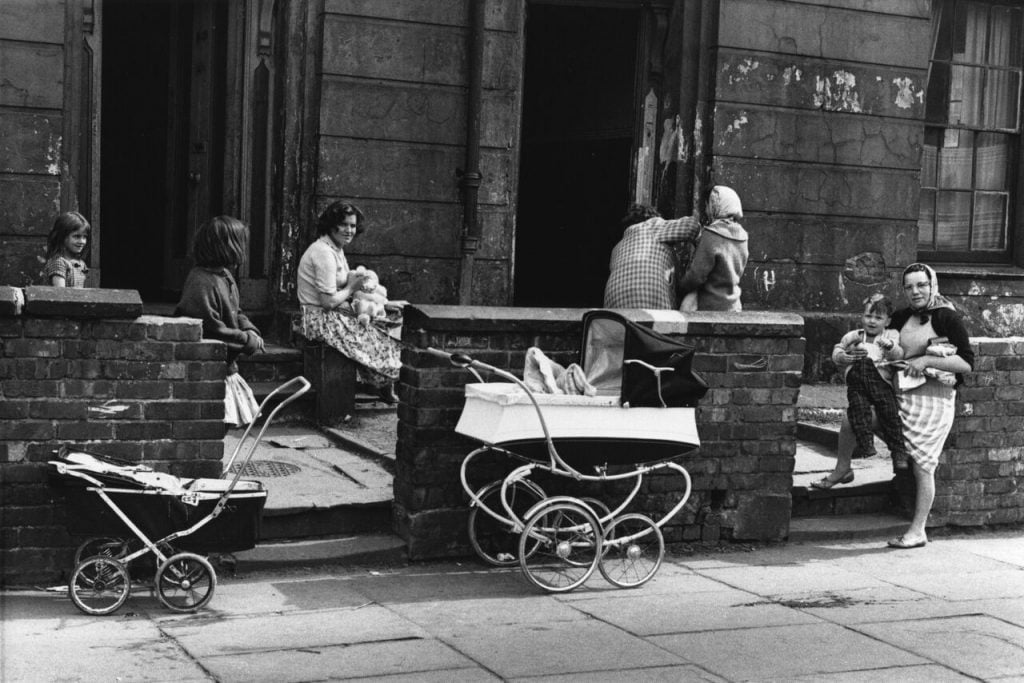
Near Upper Brook St, Manchester, 1964 by Shirley Baker (© Shirley Baker Estate). Courtesy of Mary Evans Picture Library.
This programme of urban clearance, according to Baker, constituted the needless destruction of working class communities. Indeed, this conviction is communicated through her photographs. The sense of the street as a place of community is particularly moving, as women and children loll in their doorsteps, merging public and private spaces in a way unfamiliar to many of us today. Heartwarmingly toothy grins and looks of bashful suspicion meet the camera, a rarity in the day, particularly to working class communities such as those depicted. As these images move into representations of broken landscapes and deserted shops and houses, the sense of loss in the face of social destruction experienced by the communities is exceptionally poignant.
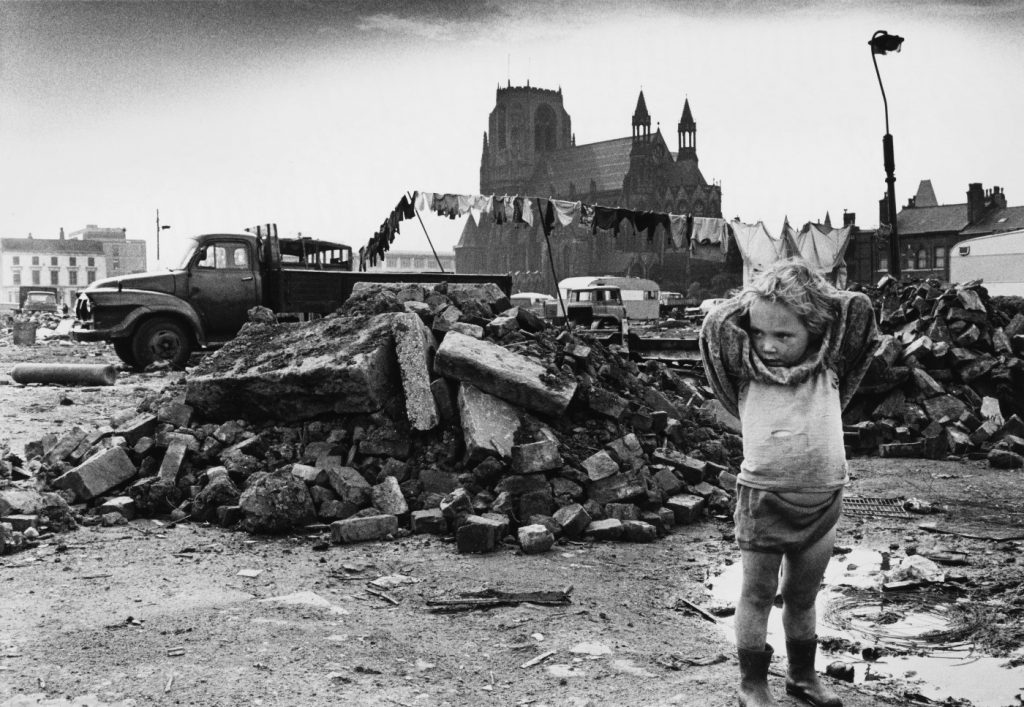
Manchester, 1968 by Shirley Baker (© Shirley Baker Estate). Courtesy of Mary Evans Picture Library.
The exhibition spans two rooms, the larger showing a collection of Baker’s more typical black and white photography, while the smaller showcases her experiments in colour. These rare photographs, disliked by Baker, have remained largely unprinted until now, kept hidden away in her archive since they were taken in 1965. And the pictures are wonderful, with muted colours lending the images a film-still-like quality not so prominent in the monochrome photographs.
The legacy that Baker has created is yet more incredible when we consider that she essentially sprung out of nowhere. Coming from a background in industrial photography, and lacking membership to any kind of aesthetic community, just quite where her inspiration came from remains unclear. The evidence points to her direction and approach as being quite self-created, welling up and spilling out into the body of work that is left today. She would give herself briefs, such as ‘Women and dogs’ or ‘Couples caught unawares’, not getting much by way of compensation or recognition for her work and yet pursuing it with a hungry and almost obsessive fervour. Such self-made vocation seems to indicate that Baker was an artist in its truest sense, and to be able to view her work, expertly curated, in the Manchester Art Gallery today is a chance that mustn’t be missed.
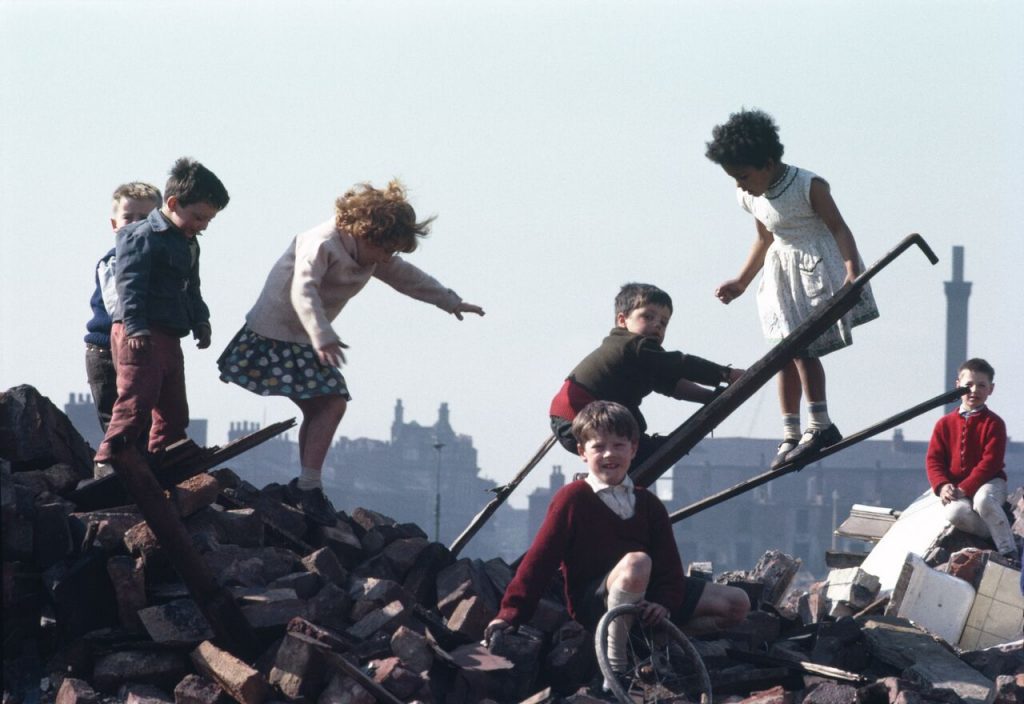
Hulme, 1965 by Shirley Baker (© Shirley Baker Estate). Courtesy of the Shirley Baker Estate.
Filed under: Art & Photography
Tagged with: 1960's, female photographer, Hulme, manchester, Manchester Art Gallery, photographer, photography, review, Salford, Shirley Baker, street photography, What's On, Women and Children; and Loitering Men
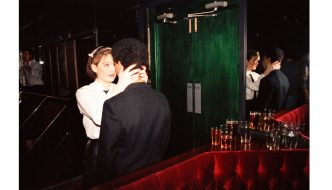

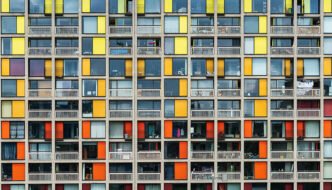
Comments